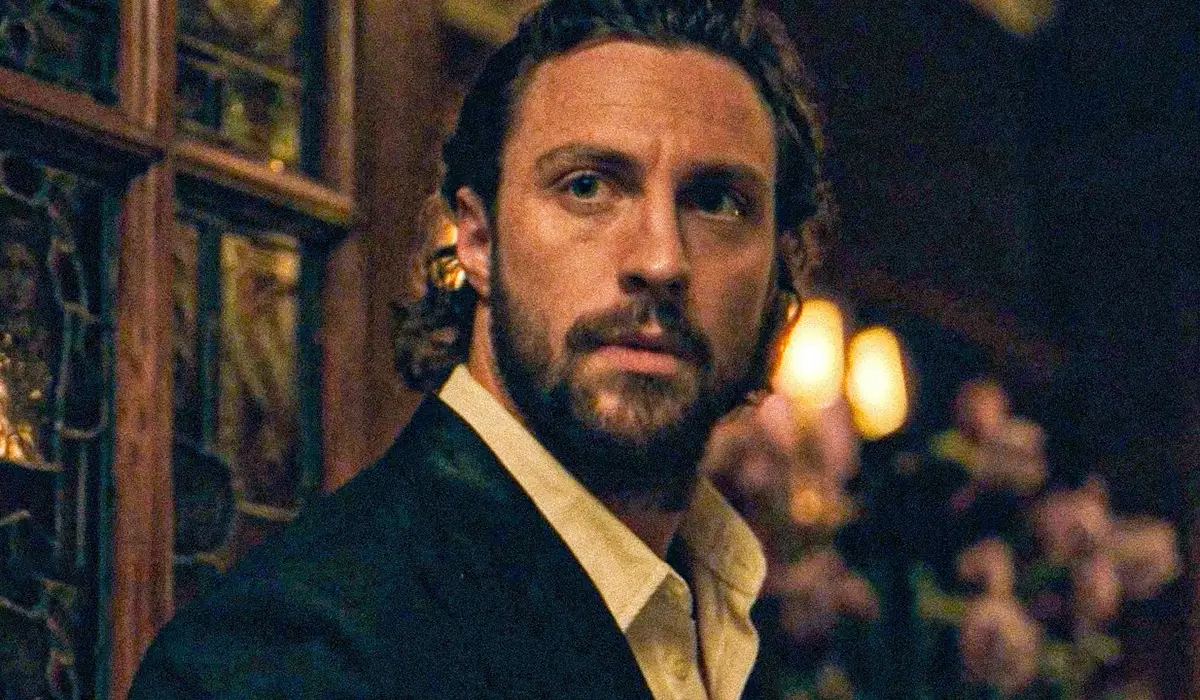Table of Contents
In the world of entertainment, actors often build their careers across stage, screen, and television, creating a body of work that spans genres and decades. Patrick Wilson fits this description, with roles that range from musical theater leads to intense horror characters. As of 2025, reports place his net worth at an estimated $7 million. This figure reflects years of consistent projects in film, TV, and theater, including recent appearances in high-profile franchises. With the release of The Conjuring: Last Rites earlier this year, Wilson wrapped up a significant chapter in his professional life, drawing attention to both his on-screen presence and the financial aspects of his journey.
Wilson’s path hasn’t followed a straight line to blockbuster fame. He started in theater, earning recognition for musical performances before branching into dramatic roles on television and in movies. His work in horror series like The Conjuring and Insidious has become a cornerstone of his resume, contributing substantially to his earnings. Yet, his portfolio extends beyond scares, including parts in superhero films and limited series. This diversity helps explain the steady accumulation of his wealth over time.
Understanding Wilson’s financial standing involves looking at how his career has evolved. Factors such as salary from major films, residuals from streaming hits, and earlier theater income all play a role. Industry observers note that while he hasn’t reached the nine-figure levels of some peers, his approach—focusing on varied roles rather than chasing the biggest paychecks—has led to reliable work. In 2025, with new projects on the horizon, questions about his net worth continue to surface among fans tracking Hollywood finances.
This overview explores Wilson’s background, key career moments, personal details, and a breakdown of his estimated earnings. It draws on public reports to provide context without delving into unverified specifics. For those interested in actor finances, Wilson’s story offers a grounded example of how persistence in the industry can yield solid results.
Early Life and Path to Performing Arts
Patrick Joseph Wilson entered the world on July 3, 1973, in Norfolk, Virginia. His family soon relocated to St. Petersburg, Florida, where he spent much of his childhood. Growing up in a household connected to the arts and media shaped his early interests. His mother, Mary Kay, worked as a singer and voice instructor, exposing him to music from a young age. His father, John, served as a news anchor at a local station, adding a layer of public-facing professionalism to the home environment.

Wilson shared his formative years with two older brothers, Mark and Paul. The family dynamic emphasized creativity alongside everyday routines, with music often filling the air. Reports describe a supportive setting that encouraged exploration of performance, though not without the typical challenges of a middle-class upbringing. After completing high school at Shorecrest Preparatory School, Wilson pursued formal training in the arts.
He enrolled at Carnegie Mellon University in Pittsburgh, earning a Bachelor of Fine Arts in Drama in 1995. The program’s rigorous curriculum, known for blending acting techniques with practical stage experience, prepared him for professional opportunities. During his time there, Wilson honed skills in voice, movement, and character development—essentials for the musical theater world he would soon enter. Graduates from such programs often credit the structured environment for building resilience, a trait evident in Wilson’s later career choices.
Post-graduation, Wilson didn’t immediately head to New York or Los Angeles. Instead, he joined touring productions, gaining on-the-road experience that tested his adaptability. This phase, common for many emerging actors, involved understudy roles and ensemble parts, laying groundwork for bigger stages. By the late 1990s, he had positioned himself for Broadway auditions, marking the start of a deliberate climb in theater circles.
Breaking into Broadway and Early Theater Work
Wilson’s entry into professional theater came through national tours, where he took on supporting roles in established musicals. In 1995, he served as an understudy in a production of Miss Saigon, traveling across the U.S. and absorbing the demands of live performance under varying conditions. The following year, he stepped into a lead spot as Billy Bigelow in a tour of Carousel, a Rodgers and Hammerstein classic. These assignments allowed him to refine his singing and acting, skills rooted in his mother’s influence.
By 1999, Wilson had returned to New York for an off-Broadway run of Bright Lights, Big City, earning a Drama Desk Award nomination for Outstanding Actor in a Musical. This recognition highlighted his potential in contemporary adaptations of literary works. His Broadway debut arrived in 2000 with The Full Monty, where he portrayed Jerry Lukowski, a laid-off steelworker navigating unemployment and personal reinvention. The show’s mix of humor and heart resonated with audiences, leading to Tony, Drama Desk, and Outer Critics Circle nominations for Wilson in the Best Actor category.
Just two years later, he returned to the Great White Way as Curly McLain in a revival of Oklahoma!. This role, another Tony-nominated performance, showcased his baritone voice and cowboy charm, drawing comparisons to classic interpretations. The production’s success underscored Wilson’s affinity for musical theater, a genre that demands both vocal precision and emotional depth. Between these runs, he filmed a small project called My Sister’s Wedding, though it never saw wide release—a common occurrence for early-career efforts.
These theater years, roughly from 1995 to 2003, formed the foundation of Wilson’s reputation. Earnings from Broadway can vary, with lead actors reportedly pulling in $2,000 to $5,000 per week during runs, plus potential bonuses from extended bookings. For Wilson, these roles not only built his resume but also opened doors to film and TV scouts attending performances. His stage work emphasized versatility, setting him apart in an industry that values range.
Shifting Gears: Film and Television Roles
As the early 2000s progressed, Wilson began transitioning from stage to screen, balancing both mediums. His television breakthrough came with the 2003 HBO miniseries Angels in America, an adaptation of Tony Kushner’s play about the AIDS crisis. Playing Joe Pitt, a closeted Mormon lawyer, Wilson received Primetime Emmy and Golden Globe nominations for Outstanding Supporting Actor. The project’s critical acclaim, including multiple awards for the ensemble, marked a pivotal moment, introducing him to broader audiences.
Film opportunities followed quickly. In 2004, he appeared as William B. Travis in The Alamo, a historical Western directed by John Lee Hancock. That same year, he took on Viscount Raoul de Chagny in Joel Schumacher’s adaptation of The Phantom of the Opera. The musical film’s lavish production allowed Wilson to leverage his theater background, earning a Satellite Award nomination for Best Actor in a Supporting Role, Comedy or Musical. These roles demonstrated his ability to handle period pieces and romance, expanding his appeal.
By 2005, Wilson delved into edgier territory with Hard Candy, a psychological thriller co-starring Elliot Page. His portrayal of a suspected predator opposite a teenage vigilante drew mixed reactions but showcased his dramatic range. The following year brought Little Children, where he played Brad Adamson, a stay-at-home dad entangled in suburban tensions. Critics praised the performance, leading to a Young Hollywood Award for Breakthrough Performance – Male and a Satellite nomination for Best Actor in a Motion Picture, Drama.
Television commitments interspersed these films. From 2011 to 2012, he led the CBS series A Gifted Man as Dr. Michael Holt, a surgeon guided by his deceased ex-wife’s spirit. Though the show lasted one season, it provided steady work during a transitional period. Guest spots, like on HBO’s Girls in 2013 and 2017, added variety, earning him Critics’ Choice Television Award nominations for Best Guest Performer in a Comedy Series.
Throughout this era, Wilson’s filmography grew with projects like Watchmen (2009) as Dan Dreiberg/Nite Owl II, The A-Team (2010), and Morning Glory (2010). These ensemble-driven movies, often with budgets in the $50-100 million range, reportedly paid actors in the $1-2 million range for supporting parts, contributing incrementally to his income. His TV and film salaries during this time likely ranged from $100,000 to $500,000 per project, based on industry standards for mid-level talent.
The Horror Boom: Insidious and The Conjuring Franchises
Horror became a defining element of Wilson’s career starting in 2010 with Insidious, where he played Josh Lambert, a father confronting supernatural threats. The low-budget film ($1.5 million) exceeded expectations, grossing nearly $100 million worldwide. Its success spawned sequels, including Insidious: Chapter 2 (2013), which earned $161.9 million. Wilson reprised the role in later entries, with the franchise as a whole generating over $700 million.
Even more impactful was 2013’s The Conjuring, casting Wilson as demonologist Ed Warren alongside Vera Farmiga as Lorraine Warren. Based on real-life paranormal investigators, the movie pulled in $319.5 million on a $20 million budget, launching a universe of spin-offs. Wilson returned for The Conjuring 2 (2016, $321.8 million), Annabelle Comes Home (2019, $231.4 million), and The Conjuring: The Devil Made Me Do It (2021, $206.6 million). The series has amassed over $2 billion globally, with each installment reportedly compensating leads like Wilson in the $1-3 million range, increasing with sequels.
In 2023, Wilson made his directorial debut with Insidious: The Red Door, also starring as Josh Lambert. The film grossed $189 million, adding another layer to his involvement in the genre. This behind-the-camera role likely boosted his earnings through directing fees and producer credits. For The Conjuring: Last Rites (2025), his estimated payday reached $2 million, per industry reports, as the franchise concluded its main storyline.
These horror projects stand out for their box-office reliability. Unlike one-off films, franchises offer residuals from home video, streaming, and international markets, providing ongoing revenue. Wilson’s association with these series has solidified his status in the genre, where actors often see career longevity through repeated collaborations.
Diverse Roles Beyond Horror
While horror dominates headlines, Wilson’s credits include a mix of genres. In 2009’s Watchmen, he embodied the conflicted vigilante Nite Owl in Zack Snyder’s adaptation of the graphic novel, contributing to a $185 million gross. Superhero fare continued with 2018’s Aquaman, where he portrayed Orm Marius/Ocean Master, the Atlantean antagonist. The film became a billion-dollar hit ($1.148 billion), and Wilson returned for Aquaman and the Lost Kingdom (2023, $434 million). Such blockbusters reportedly netted him $3-5 million per film, including backend deals.
Other standouts include Fargo Season 2 (2015) as Lou Solverson, a state trooper in the Coen brothers-inspired anthology. His grounded performance earned Golden Globe and Critics’ Choice nominations for Best Actor in a Limited Series. Films like Prometheus (2012), a Alien prequel, and Midway (2019), a World War II drama, added historical and sci-fi elements to his reel. In 2019’s In the Tall Grass, a Netflix horror based on Stephen King, he explored psychological dread outside major studios.
Wilson also produced and starred in Let’s Kill Ward’s Wife (2014), a dark comedy that highlighted his interest in independent projects. These varied roles, from action to drama, demonstrate a strategy of diversification, which helps mitigate the risks of typecasting in Hollywood.
Personal Life and Family Balance
Wilson has maintained a relatively private personal life amid his public career. He married actress Dagmara Domińczyk on June 18, 2005, after meeting through industry connections. The couple has two sons: Kalin, born in 2006, and Kassian, born in 2009. Domińczyk, known for roles in films like The Count of Monte Cristo, shares Wilson’s theater roots, creating a household attuned to creative pursuits.
Family remains a priority, with Wilson often mentioning the challenges of balancing long shoots and home life. In a recent interview promoting The Conjuring: Last Rites, he shared that his children prefer staying away from sets, viewing them as unappealing work environments. This sentiment reflects a common experience for parents in the industry, prioritizing normalcy for kids.
Wilson’s extended family includes his brother-in-law, actor Scott Foley, married to Domińczyk’s sister Marika. The brothers formed a band, VanWilson, performing at charity events. In 2012, they raised $30,000 for the Southeastern Guide Dogs’ Paws for Patriots program, with the organization naming puppies after each member. Such involvement points to a commitment to community causes.
Educationally, Wilson received an honorary Doctor of Fine Arts from Trinity College in 2011, where he served as commencement speaker. He also keynoted at Carnegie Mellon’s 2012 graduation, returning the favor to his alma mater. These milestones blend personal achievement with giving back.
Awards and Industry Recognition
Wilson’s contributions have garnered numerous nods over the years. Early theater work brought Tony nominations for The Full Monty (2001) and Oklahoma! (2002). On screen, Angels in America yielded Emmy and Golden Globe bids in 2004, alongside Online Film & Television Association honors.
Later accolades include a 2006 Young Hollywood Award for Little Children and Fangoria Chainsaw nominations for horror roles in Hard Candy (2006) and Insidious: Chapter 2 (2014). For Fargo, he earned a 2016 Golden Globe nomination and Critics’ Choice recognition. Satellite Awards came for The Phantom of the Opera (2005) and Little Children (2006).
In 2019, the Sitges Film Festival presented him with the Time-Machine Honorary Award. Scream Awards and Fright Meter nods for Insidious (2011) and The Conjuring (2013) affirmed his horror footprint. A Teen Choice Award nomination for Choice Movie Villain in Aquaman (2019) rounded out fan-voted appreciation. These honors, while not always converting to wins, signal consistent peer and audience respect.
Breaking Down Patrick Wilson’s Estimated Net Worth
Public estimates peg Wilson’s net worth at $7 million in 2025, a figure consistent across multiple entertainment trackers. This total stems from a career spanning over 60 credits since the late 1990s. Unlike actors tied to mega-franchises from the start, Wilson’s wealth built gradually through a combination of upfront salaries, residuals, and occasional producing/directing fees.
Theater provided initial income, with Broadway leads offering weekly pay in the mid-four figures during peak runs. Film salaries evolved from $100,000-$300,000 for early indies like Hard Candy to $1-2 million for mid-tier projects such as Watchmen. Blockbusters amplified this: Aquaman‘s success likely included profit participation, pushing per-film earnings toward $4 million.
Horror franchises represent the largest slice. Insidious entries reportedly paid $500,000-$1.5 million each initially, scaling up with The Red Door. For The Conjuring series, cumulative pay exceeds $10 million, with Last Rites at $2 million alone. TV stints like A Gifted Man added $150,000-$250,000 per episode for leads, while limited series like Fargo brought similar sums.
Residuals from streaming platforms—where The Conjuring films remain popular—provide passive income, estimated at hundreds of thousands annually. Investments and endorsements, though not publicly detailed, likely contribute modestly. Deductions for agents, taxes, and production costs temper gross figures, aligning with the $7 million net.
Compared to horror peers, Wilson’s estimate appears moderate, reflecting a focus on artistic choices over maximum commercialization. Ongoing projects suggest potential growth, but his trajectory emphasizes sustainability over rapid spikes.

Recent Projects and What’s Next
2025 marked the end of Wilson’s Conjuring era with Last Rites, where he bid farewell to Ed Warren. The film, directed by Michael Chaves, continued the franchise’s tradition of real-case inspirations, grossing steadily in theaters. Wilson made a surprise appearance at an Atlanta screening, engaging fans directly and reflecting on the series’ decade-long run.
Looking ahead, he’s attached to an Apple TV+ adaptation of Cape Fear, staying fit during production as spotted in recent photos. Directing remains on his radar, building on Insidious: The Red Door. Unconfirmed reports hint at theater returns, aligning with his roots.
These developments indicate a continued presence across mediums, potentially influencing future earnings through new revenue streams like streaming deals.
Wrapping Up Wilson’s Enduring Appeal
Patrick Wilson’s career illustrates a balanced approach in entertainment: starting with theater foundations, expanding into film and TV, and finding longevity in genre work. His estimated $7 million net worth in 2025 underscores the value of steady output over fleeting stardom. As he moves past major franchises, upcoming roles promise further chapters. For fans and observers, his story remains one of adaptability in an ever-shifting industry.






